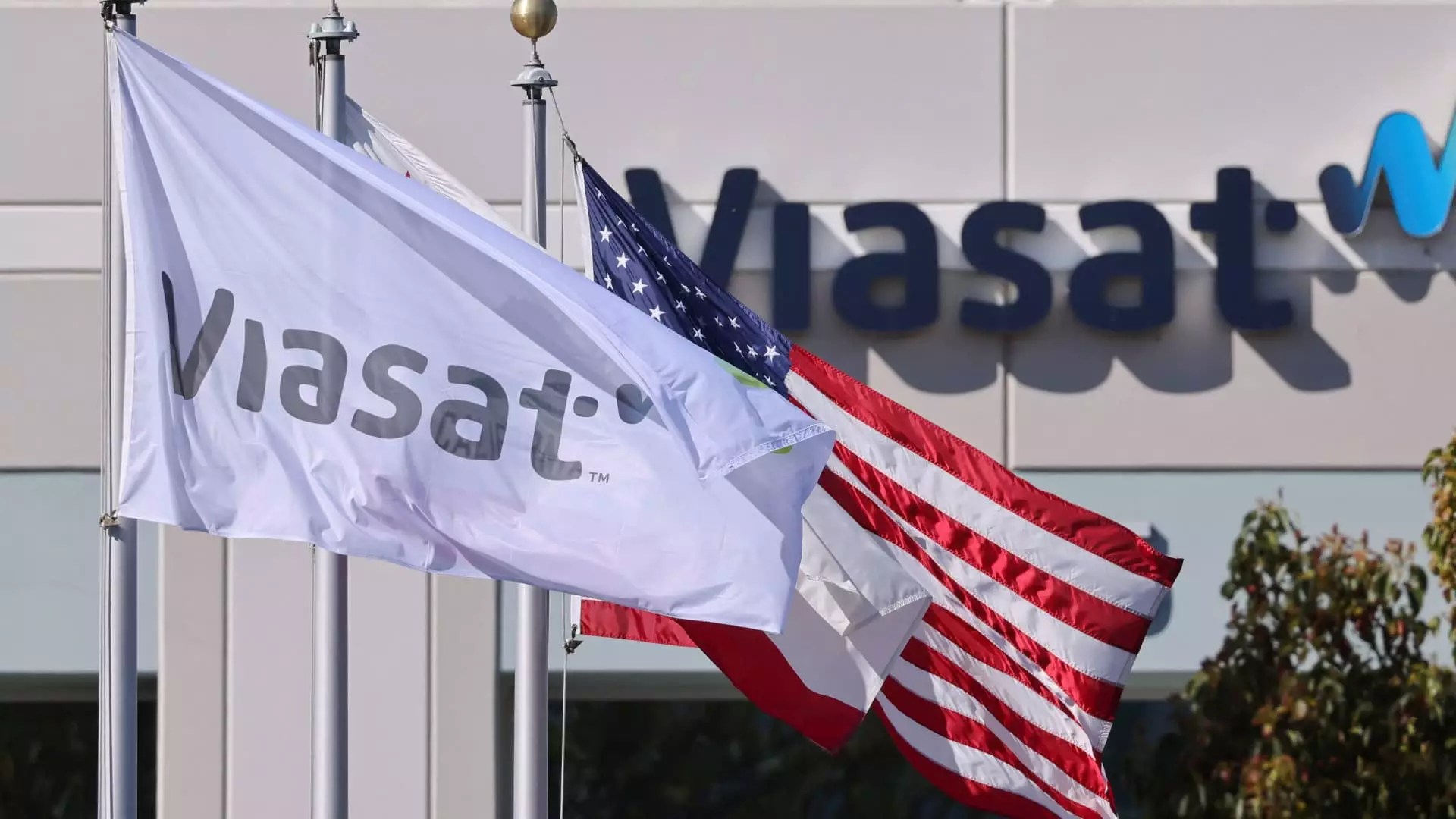Investors in the technology and telecommunications sectors are often drawn to the glimmer of opportunity, especially when a financial institution such as Deutsche Bank heralds a hopeful upgrade. When they recently upgraded Viasat from hold to buy, projecting a price target increase from $13 to $15, claims of a potential 53% upside danced on the lips of optimistic analysts. Yet, amidst the allure of growth, one must remain critical and dissect the underlying complexities that could undermine this seemingly robust projection.
While the stock may have risen in the short term, with an impressive uptick of about 12% in March alone, we cannot ignore its broader trajectory. A more expansive context reveals a disconcerting picture; Viasat has plummeted over 23% in the past six months, creating doubt about its long-term viability. The S&P 500, in stark contrast, has suffered only a fraction of that decline, reinforcing concerns that Viasat may be grappling with deeper issues than simple market fluctuations.
Starlink’s Shadow: The Competitive Threat
It’s impossible to paint Viasat’s outlook as rosy without addressing the elephant in the room—Starlink. The satellite internet service, spearheaded by SpaceX, has launched with unprecedented dynamism, shaking traditional models and compelling industry giants like Viasat to rethink their strategies. Deutsche Bank’s analyst, Edison Yu, acknowledged the pressure that Viasat’s core communication services face in this competitive landscape. Can Viasat truly maneuver through the shadow of a titan like Starlink, which continues to set benchmarks for speed and accessibility?
By suggesting “multiple paths for the company to create equity value,” Yu skims over the substantial hurdles that lie ahead. The potential monetization of Viasat’s L-band spectrum sounds alluring, yet it raises questions about the effectiveness and timeliness of such a strategy. While the L-band is indeed recognized for its reliability—especially in adverse weather conditions—the actual realization of value from such assets may not materialize as swiftly as some may hope, given the prevailing market volatility.
Hope in Deleveraging: A Double-Edged Sword
Yu’s optimism regarding Viasat’s ability to deleverage its balance sheet through asset monetization reveals a potential silver lining. However, relying on asset sales raises significant concerns. The market is notoriously fickle, and lean strategies might backfire, especially if Viasat struggles to find the right buyers or if valuations fall short of expectations. Selling off key assets, particularly in sectors like Defense and Advanced Technologies, is a tactic fraught with significant risks and could leave the company vulnerable in strategic areas.
Yu’s assertion that the spinoff of Defense and Advanced Technologies could command higher valuations also feels like a fragile assumption. While the market for defense tech has indeed performed well, Viasat must prove that its assets can compete with other established entities. The competition for investment dollars in a crowded defense sector means that valuation expectations must be approached with skepticism.
Future Prospects: The ViaSat-3 Satellites
Turning to the future, Viasat’s plan to deploy its ViaSat-3 satellites carries weight in the analyst’s forward-looking views. However, the path from deployment to realization of “positive free cash flow” remains ambiguous. Investors need to ask: What if operational challenges arise, or if demand fails to stimulate the projected outcomes? A rosy $300 million to $500 million cash flow projection in 2027 feels almost too distant, creating a risk that could haunt shareholders, especially when many have experienced losses in the shorter term.
Despite the overall optimism from some quarters, the consensus among analysts is far from bullish. With a majority maintaining hold ratings, the sentiment suggests a cautious approach rather than unbridled enthusiasm. An average target price implying nearly 108% upside might tempt the daring, but experienced investors recognize that such allure often masks deeper uncertainties.
In the complex terrain of satellite communications, Viasat stands at a critical juncture. While the recent analyst upgrades offer a glimmer of hope, one cannot overlook the substantial roadblocks ahead. The dance between opportunity and risk is inextricably linked in this high-stakes market, and prospective investors would do well to tread carefully as they navigate Viasat’s uncertain future.


Leave a Reply